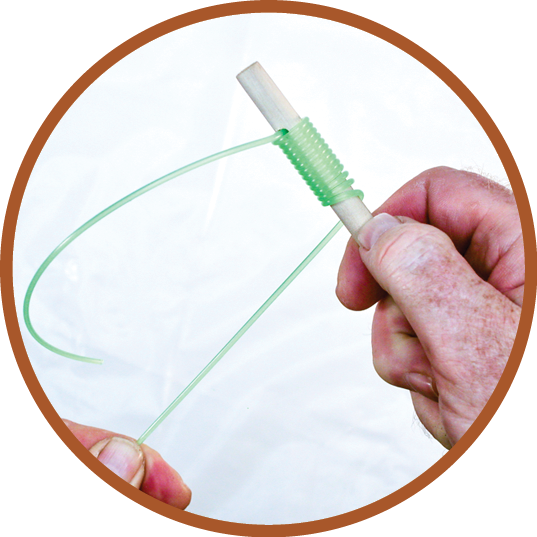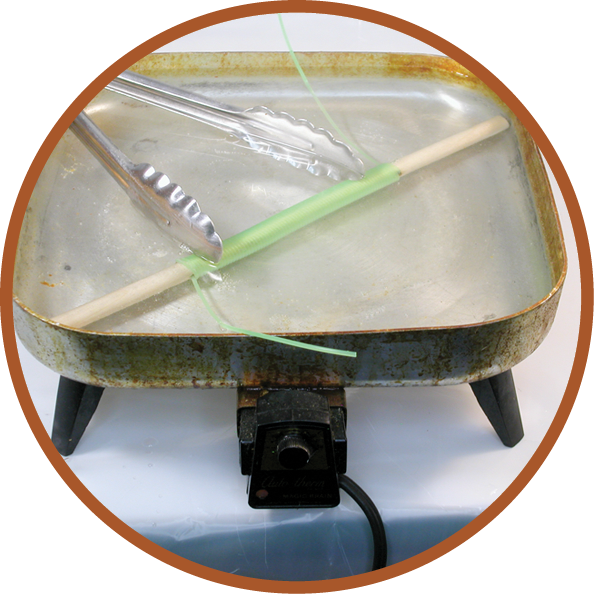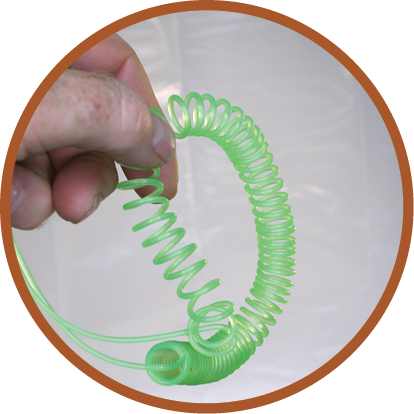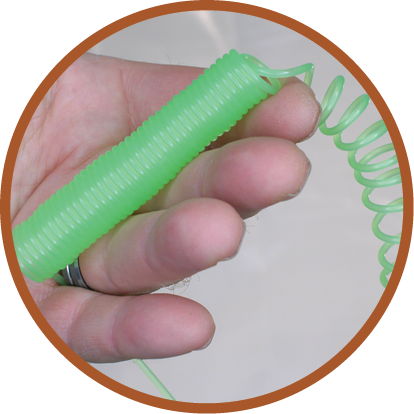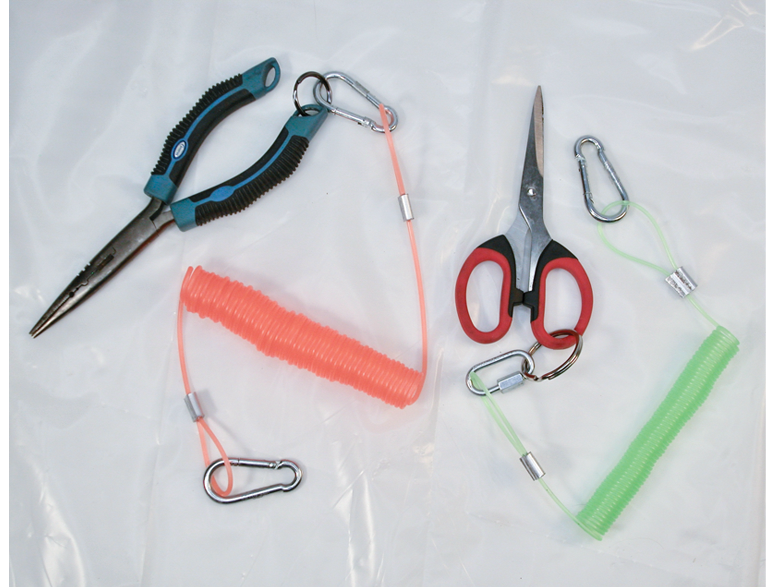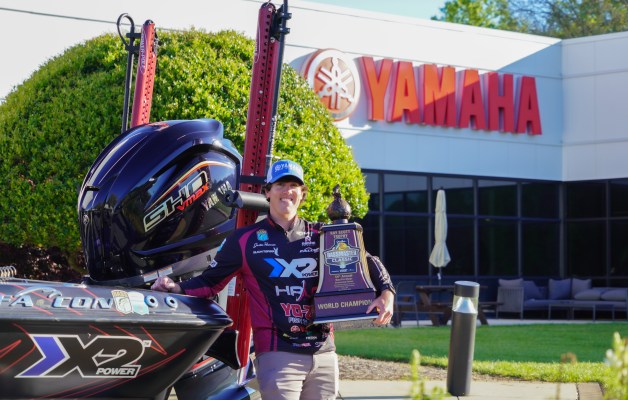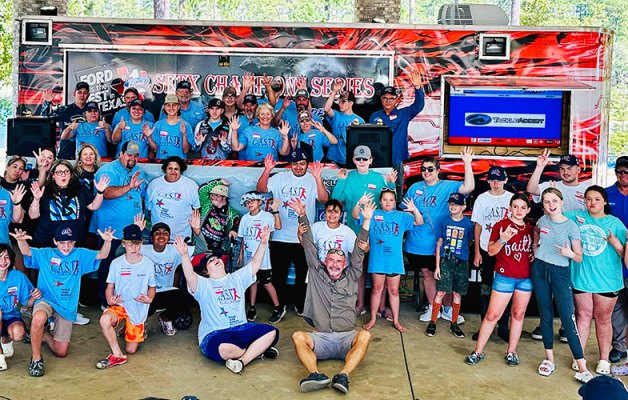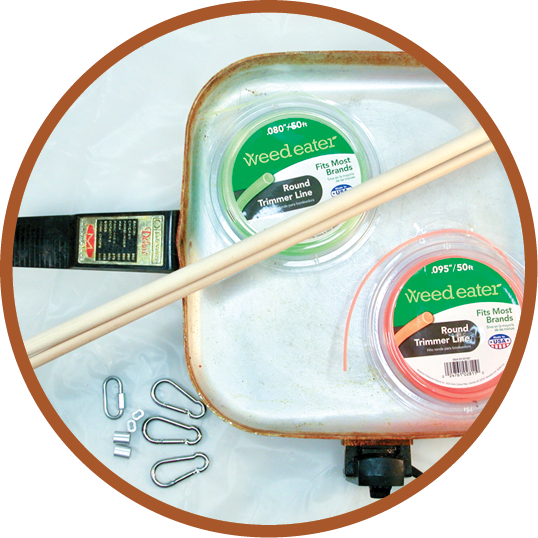
To make your own coiled lanyards inexpensively, use round trimmer line (both the .080- and .095-inch sizes work). Just wrap it around 1/2- or 3/8-inch dowel rods and cook it. Cable clamps that fit snugly on the line create loops to accept small carabiners or chain-link connectors. One end attaches to the yak; the other end holds the tool.
